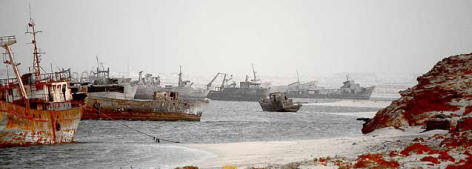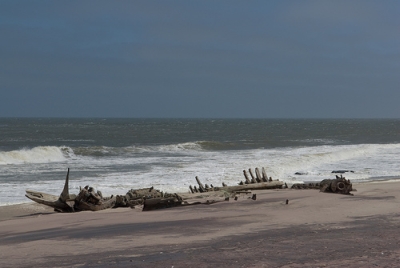|
|||||||||||||||||
|
|||||||||||||||||
|
|
|
||||||||||||||||
|
Cruise News for the Corporate Travel Professional |
|||||||||||||||||
| Menu |
Recently the BBC published an article, Nigeria’s
coast ‘threatened by shipwrecks’, focused on the 100 rusty shipwrecks which
line Nigeria’s 853km (530-mile) coast. The ships are causing coastal erosion
and pollution. Nigeria is not the only country on the West coast of Africa with
“graveyard of ships” however. The one of the largest graveyard of ships in the world is in the Bay of Nouadhibou (formerly Port-Étienne.) Nouadhibou is the second largest city in Mauritania. An estimated 300 or more ships have been abandoned. Reportedly the abandonment started in the 80s with the nationalization of the Mauritanian fishing industry, when uneconomical fishing vessels were abandoned in the bay. Foreign owners are said to have seen an opportunity to use the bay as a dumping ground, as well. The bay is now said to have been heavily polluted by the abandoned ships.
Graveyard of ships in the Bay of Nouadhibou The graveyard of ships on Namibia’s forbidding Skeleton Coast has had a happier outcome. The shipwrecks in this region were generally not dumped by owners but rather were driven ashore by gales or during persistent fogs. The Skeleton Coast and its shipwrecks are now tourist attractions. The government of Namibia has established the Skeleton Coast National Park . Skeleton Coast The Skeleton Coast is is normally associated with famous shipwrecks, and stories abound of sailors walking for hundreds of kilometres through this barren Namibian landscape in search of food and water. The name came from the bones that lined the beaches from whaling operations and seal hunts, but more than a few of the skeletons were human. The Bushmen called it The Land God Made in Anger and the Portuguese knew it as The Gates of Hell. Ever since European navigators first discovered it, ships have wrecked on it’s off-shore rocks, or run aground in the blinding fog. While small boats could land, the strong surf made it impossible to launch, hence the stories of sailors walking through the murderous terrain. The coast has scores of shipwrecks, some are barely recognizable, other are still in remarkably good condition. Perhaps these tragedies were meant to happen, as the wrecks provide excellent environments for Cape fur seals, living side by side with seabird colonies, offering unequaled maritime photographic opportunities. |
||||||||||||||||
| Past Issues | |||||||||||||||||
| Cruise Products | |||||||||||||||||
| Hot Cruise Deals | |||||||||||||||||
| Ship Report Archives | |||||||||||||||||
| Resources |
|
||||||||||||||||
| About us | |||||||||||||||||
| Our Services | |||||||||||||||||
| Contact Us | |||||||||||||||||
| End Subscription |
|
||||||||||||||||
| Our Web-Site | |||||||||||||||||
| Privacy Policy | |||||||||||||||||
|
|
|||||||||||||||||
|
|
|||||||||||||||||
|
Worldwide Travel & Cruise Assoc., Inc. 150 S. University Dr. Ste E, Plantation, FL 33324 - USA Tel: +1 954 452 8800 Fax: +1 954 252 3945 EMail: sales@cruiseco.com |
|||||||||||||||||
|
Designed & Published by: Worldwide Media. |
|||||||||||||||||







